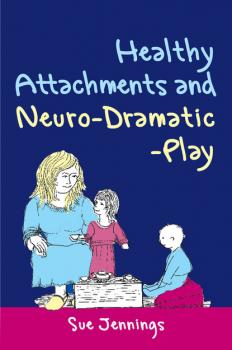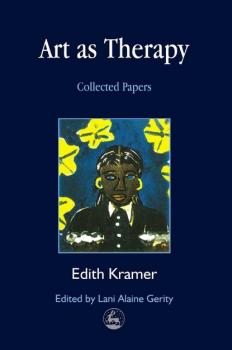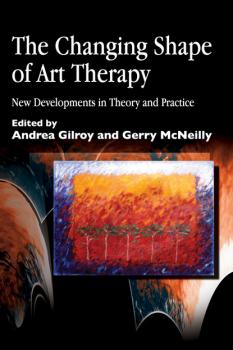Arts Therapies
Скачать книги из серии Arts TherapiesStudio Art Therapy
Arguing that the profession of art therapy has its roots in the studio environment, Catherine Moon proposes that it is now time to reclaim these roots, and make art once again central to art therapy. She suggests that there has been a tendency for art therapy not merely to interact with and be enriched by other perspectives – psychological, social, anthropological and transpersonal – but to be subsumed by them. For this reason she makes a clear distinction between using art in one's practice of therapy, and working from an art-based model. This book presents a model of art therapy where the products and processes of art constitute the core of the model, rather than serving as the impetus for adaptations of other theories of counselling or therapy. It addresses how an arts-based approach can inform the therapist in all aspects of practice, from the conception of the work and the attempt to understand client needs to interacting with clients and communicating with others about the profession of art therapy. Integrated into the book are stories about the work of art therapists, art therapy students and those who seek help in art therapy, presenting the theory behind studio art therapy and bringing it to life. Moon believes that the arts have something unique to offer to the therapeutic process which distinguish the arts therapies from other therapeutic professions. This book is a comprehensive and engaging exploration of the possibilities inherent in the therapeutic use of the arts.
Healthy Attachments and Neuro-Dramatic-Play
Breaking new ground in the areas of attachment and child development, Sue Jennings introduces the concept of 'Neuro-Dramatic-Play' exploring the sensory experiences that take place between mother and child during pregnancy and the first few months after birth. She explains how this interaction, that is essentially 'dramatic' in nature, is of crucial importance for the infant to develop a healthy brain, strong attachments and future resilience. Based on sound experience and observation, this book consolidates current theories of neuroscience, attachment and therapeutic intervention and challenges commonly held psychoanalytic ideas of child development. By expanding on the often narrow view of what is understood by attachment, this book makes a strong case for early years inclusion of play and arts therapies. Neuro-Dramatic-Play is also discussed in relation to fostering and adoption, teenagers and young adults, and children with developmental or cognitive disabilities. This accessible text will interest all therapists and practitioners who work with children and teenagers, including child psychotherapists, psychologists, social workers, paediatric and perinatal nurses, paediatricians, child psychiatrists and play and arts therapists, and post-graduate students.
Art Therapy with Children on the Autistic Spectrum
Recent research has shown that art therapy can be particularly effective for children with autism and related communication disorders. The extensive range of symptoms experienced by autistic people makes them extremely individual in presentation, so any treatment used must be tailored to a range of varying needs. Art Therapy with Children on the Autistic Spectrum presents a new model of practice, which primarily focuses on communication difficulties. The authors describe how negative behaviours and subsequent tension may be alleviated when the autistic child is involved in interactive art making with the therapist. The book is divided into three parts: the first part explores art making processes and art work, with an emphasis on how art can be specifically communicative. A history of autism is presented within the therapeutic context. The second part challenges existing methods of practice within art therapy and considers the most appropriate approaches to treating autistic children. The last part discusses research that lead to the formulation of this specific model – methodology and assessment interventions are analysed, as well as the ongoing development of appropriate assessment instruments. Case studies of art therapy with individual autistic children demonstrate the use of the model and the outcomes. Throughout the book, it is emphasised how art therapy works as an integral part of overall management and treatment approaches to autism. It will be of particular interest to all those professionals working with autistic children and specialists in other communication disorders.
Art in Action
The field of expressive arts is closely tied to the work of therapeutic change. As well as being beneficial for the individual or small group, expressive arts therapy has the potential for a much wider impact, to inspire social action and bring about social change. The book's contributors explore the transformative power of the arts therapies in areas stricken by conflict, political unrest, poverty or natural disaster and discuss how and why expressive arts works. They look at the ways it can be used to engage community consciousness and improve social conditions whilst taking into account the issues that arise within different contexts and populations. Leading expressive arts therapy practitioners give inspiring accounts of their work, from using poetry as a tool in trauma intervention with Iraqi survivors of war and torture, to setting up storytelling workshops to aid the integration of Ethiopian Jewish immigrants in Israel. Offering visionary perspectives on the role of the arts in inspiring change at the community or social level, this is essential reading for students and practitioners of creative and expressive arts therapies, as well as psychotherapists, counsellors, artists and others working to effect social change.
Art Therapy and Creative Coping Techniques for Older Adults
Art and the therapeutic uses of art provide older adults with valuable ways in which to express and share their feelings, needs and fears, and with a resource for coping with life's major changes. This practical book is filled with step-by-step exercises for art therapists and other professionals to use in work with older adults, either individually or in groups. The author provides brief, imaginative warm-ups, which encourage participants to become more at ease expressing themselves creatively. She offers ideas for engaging and innovative creative projects across a range of media, including art, music, movement, poetry and creative writing, all of which can be adapted, personalised or combined to meet the particular needs of individual participants. Points to consider when working with this client group are explored, and case study examples, with participants' artwork, are included throughout. Appropriate for use with all relatively able older adults, including those with depression, anxiety or in the early stages of dementia, this will be an invaluable tool for art therapists as well as counsellors, psychotherapists, social workers and carers.









